The Astronomical Observatory of Calar Alto
The Calar Alto Observatory is operated by the Instituto de Astrofísica de Andalucía, in Granada, and by an agreement with the regional government of Andalusia.
Located in Sierra de Los Filabres, the observatory enjoys the weather of Almería, which provides clear and dry skies allowing the realisation of observations during more than 200 nights per year. The observatory has three telescopes with apertures of 1.23m, 2.2m and 3.5m which are equipped with various cameras, spectrometers, electronic detectors for astronomical research in the optical and infrared ranges. The Observatory holds the instrument CARMENES, a unique spectrometer for its stability and its high resolution that permits the simultaneous observation in the visible and the infrared spectrum, that has been developed in partnership with 11 Spanish and German institutions and that has made possible the discovery of exoplanets.
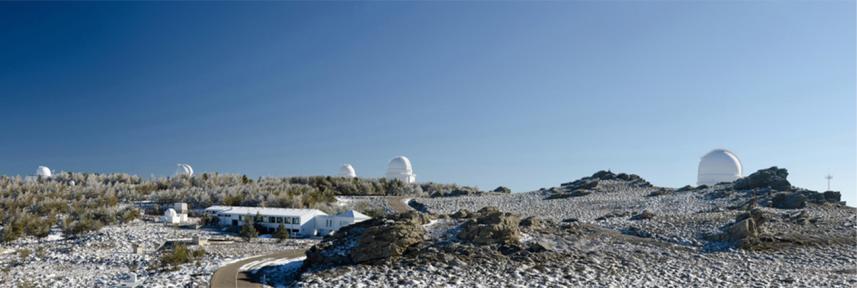
Polar stations and research vessels
The Marine Technology Unit (UTM), ascribed to the Centro Mediterráneo de Investigaciones Marinas y Ambientales (CMIMA), supports research campaigns in polar stations and is the responsible for the management, maintenance and improvement of the facilities related to the research activity in oceanographic vessels and polar stations.
The Oceanographic Research Vessel Hespérides. The Oceanographic Research Vessel belongs to the Spanish Navy and is based in Cartagena (Murcia), where it was built and launched on March 12, 1990. Hespérides is a global research vessel. Its instrumentation and laboratories allow to perform studies of geology, marine geophysics, hydrography, physical and chemical oceanography, marine biology and ocean monitoring with deep towed vehicles and remotely operated vehicles (ROVs, etc.). Hespérides has realised numerous research campaigns. It has sailed more than 300.000 nautical miles and has hosted more than a thousand foreign researchers. Its hull is reinforced to navigate the polar areas of the Antarctic and the Arctic so, in addition, it serves as a logistical support to the Spanish bases of the South Pole.
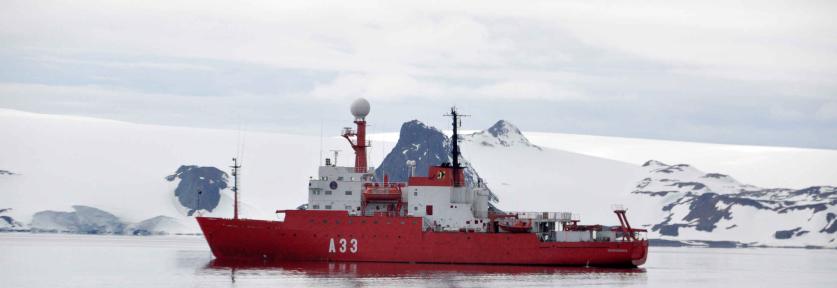
Oceanographic Vessel Sarmiento de Gamboa. Oceanographic Research Vessel Sarmiento de Gamboa has the mission to undertake global marine research. It is based in Vigo where it was launched in 2006. Due to its characteristics and high-power equipment it is the more modern and capable national oceanographic fleet vessel, which allow it to study global ocean circulation, marine biodiversity, fishery resources and climate change; it is also used to perform geology, marine geophysics, hydrography, physical and chemical oceanography, marine biology, resource estimation (fisheries), ocean monitoring with remotely operated vehicles (ROVs, AUVs, submarines, etc.) and deployment of underwater observatories (OBSEA, GEOSTAR).
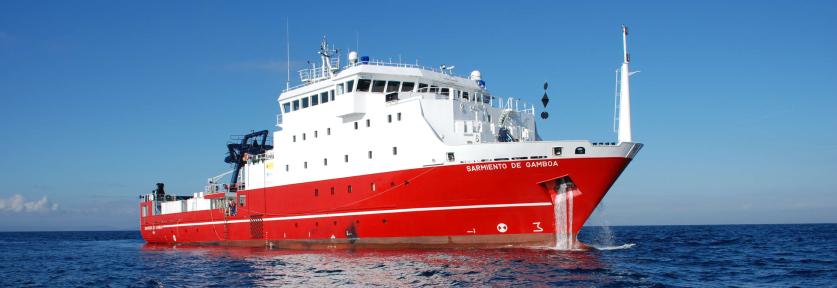
Oceanographic Vessel García del Cid. Oceanographic Research Vessel García del Cid is a regional research vessel launched in 1979 that belongs to the Spanish National Research Council (CSIC). It is based in Barcelona and its maintenance is carried out in Vigo. Its scope of action is the Western Mediterranean, Iberian Atlantic and Canary Islands. It is a vessel designed specifically for marine scientific research and is dedicated to various fields among which physical oceanography, fisheries, marine biology, geology and marine geophysics.
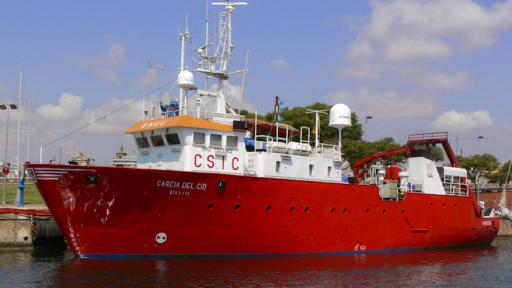
Oceanographic Vessel Mytilus. Oceanographic Research Vessel Mytilus is the smallest of the vessels. Launched in 1997, its base is in the port of Vigo. It is a coastal research vessel designed for marine biology research, physical oceanography, and marine geology. It focuses on the Rias (Galicia).
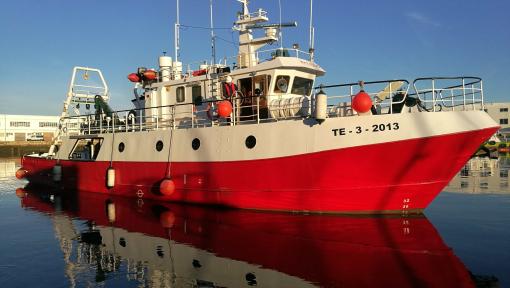
Spanish Antarctic Station (SAS) Juan Carlos I. The Spanish Antarctic Station (SAS) Juan Carlos I, managed by the Spanish National Research Council (CSIC), was opened in January 1988. Its objective is to support Spanish activities in Antarctica, specially to realise scientific research projects coordinated by the Antarctic Research Sub-programme of the National Natural Resources Programme.
The station remains opened during the four months of the austral summer, although it keeps its automatized records throughout the year. It is located on the SE coast of South Bay, on the Hurd Peninsula of Livingston Island (archipelago of the South Shetland Islands), about 20 nautical miles from the Spanish station Gabriel de Castilla, located on Deception Island. The average occupation of the station in recent years has been of 30 people, including the research and technical staff of the Marine Technology Unit (UTM). In 2017, the work and installations contracted for the completion of new modules have been completed.
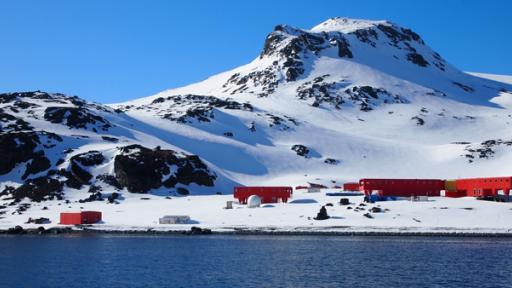
Doñana Biological Reserve/Station
The Doñana Biological Reserve/Station, located in the south-west of the Iberian Peninsula, was created in 1964 by the Spanish National Research Council (CSIC) and is now managed by the Doñana Biological Station (EBD). The protected area of Doñana occupies 106,047 hectares, and includes the National Park and Natural Park of Doñana. The Biological Reserve forms part of the National Park and is composed of two protected areas, the Doñana Biological Reserve, measuring 6,794 hectares, and the Biological Reserve of Guadiamar, measuring 3,214 hectares. Both reserves have the highest levels of conservation among the protected areas of Doñana: they are devoted exclusively to the conservation of wildlife and scientific research.
The protected area of Doñana is a unique field laboratory to research the ecology, evolution and management of biological diversity as well as the impact of global changes. The Doñana National Park was declared a UNESO Biosphere Reserve in 1980, a Wetland of International Importance by RAMSAR in 1982, a Special Protection Area for birds (Natura 2000 Network) in 1987, a World Heritage Site in 1994, and Area of Importance to the Community (Natura 2000 Network) in 1997.

Integrated Clean Room for Micro and Nano Fabrication of the National Microelectronic Centre of the CSIC (SBCNM)
The SBCNM, is one of the three Unique Scientific and Technical Infrastructures (ICTS) of the Micro and Nano-Fabrication Clean Rooms Network (MICRONANOFABS), along with the Institute of Optoelectronics Systems and Microtechnology of the Universidad Politécnica de Madrid (ISOM-UPM) and the Micro-Nanofabrication Infrastructure at the Nanophotonics Technology Center of the Universitat Politècnica de València. The SBCNM is also a node of the ICTS NANBIOSIS, the Infrastructure for the Production and Characterization of Nanomaterials, Biomaterials and Systems in Biomedicine.
The SBCNM belongs to the CSIC and is managed as part of the Institute for Microelectronics of Barcelona (IMB), of the National Microelectronics Centre (CNM). It is specially prepared for projects that require the technology of silicon devices and integrated circuits (chips), from design and manufacturing stages to encapsulation and further electrical and physical characterisation. Also, it deals in other materials for the realisation of micro and nanosystems.



National Centre of Accelerators (CNA)
The National Centre of Accelerators is a joint centre of the Universidad de Sevilla, the Regional Government of Andalusia and CSIC. It is located in its own building at the Parque Científico y Tecnológico Cartuja in Seville. Currently, it has a 3 MV Tandem Van de Graaff, a Cyclotron that provides protons of 18 MeV and deuterons of 9 MeV, a 1MV Tandem Cockcroft-Walton accelerator to be used as a mass spectrometer, a PET/CT scanner for people, a new system of radiocarbon dating called MiCaDaS, and an Irradiator of co-60.
The implementation of these infrastructures covers fields as varied as materials science, environmental impact studies, particle and nuclear physics, nuclear instrumentation, medical imaging, biomedical research and preclinical or dating molecular imaging, diagnostic and irradiation in samples of technological and biological interest, among others.

SITIO WEB: http://cna.us.es/index.php/es/
NANBIOSIS. Integrated Infrastructure of Production and Characterization of Nanomaterials, Biomaterials and Systems in Biomedicine
The Integrated Infrastructure of Production and Characterization of Nanomaterials, Biomaterials and Systems in Biomedicine, NANBIOSIS, is an ICTS integrated by the Centro de Investigación Biomédica en Red Consortium’s area in Bioengineering, Biomaterials and Nanomedicine (CIBER-BBN) and the Centre for Minimally invasive Surgery Jesús Usón (CCMIJU). This infrastructure is formed by 27 complementary and coordinated units, located in different centres in six Autonomous Communities (Aragón, Cataluña, Extremadura, Madrid, País Vasco y Valencia). These units offer a complementary service that includes the design, production of biomaterials and nanomaterials, and the characterisation of fabrics, devices and medical systems from a physicochemical, functional, toxicological and biological point of view (including preclinical validation) , focused on medical applications.
It is grouped into 5 platforms:
- Production of biomolecules;
- Production of biomaterials and nanomaterials;
- Characterization of tissues, bioma¬terials and surfaces;
- Bioimaging;
- High-performance computation.
Of the 27 Units that constitute NANBIOSIS, 5 are shared with the CSIC:
- U2. Custom Antibody Service (CAbS)
- U4. Biodeposition and Biodetection Unit
- U6. Biomaterial Processing and Nanostructuring Unit
- U8. Micro – Nano Technology Unit
- U12. Nanostructured Liquid Characterization Unit
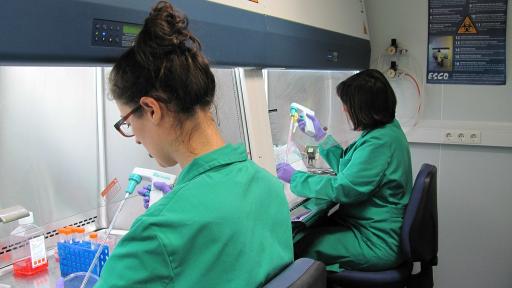
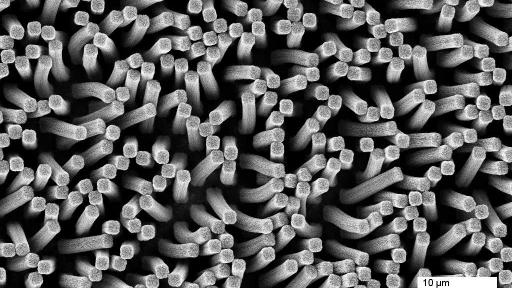
Manuel Rico Nuclear Magnetic Resonance (NMR) Spectroscopy Laboratory
The Manuel Rico Nuclear Magnetic Resonance (NMR) Spectroscopy Laboratory (known as LMR for its initials in Spanish) is a scientific-technical service of the CSIC managed by the Rocasolano Institute of Physical Chemistry (known as IQFR for its initials in Spanish), located on the Serrano Campus in Madrid. Since 2018, together with the NMR Laboratory of the University of Barcelona and the NMR Laboratory of Euskadi, the LMR is part of Spain’s Singular Scientific and Technical Infrastructures map (known as ICTS for its initials in Spanish), which belongs to the Ministry of Science, Innovation and Universities, as a node of the Bio-molecular Nuclear Magnetic Resonance Laboratory Network.

Currently, the LMR offers access to an 600 MHz and a 800 MHz (unique in the CSIC) NMR spectrometers, both equipped with cryoprobes, as well as facilities for preparing and handling biomolecular samples (proteins and nucleic acids), including a production service for isotopically labelled proteins. The objectives of this facility are to provide the instrumental means and scientific support to make the use of the most modern NMR techniques available for structural biomolecule studies, and to facilitate the access to this technique to researchers who are not NMR experts.